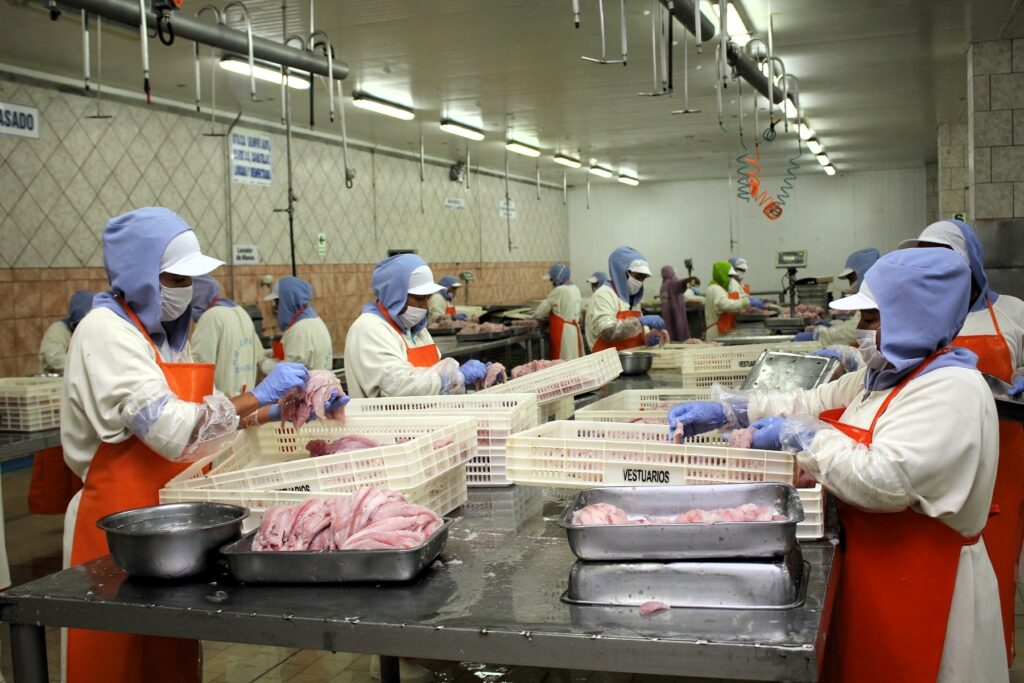Agencia Peruana de Noticias PRENSAPERU.PE https://prensaperu.pe/ Twitter: @prensaperupe Los envíos de pesca para consumo humano directo, entre enero y noviembre del 2023, sumaron poco más de US$ 1,616 millones 383 mil, presentando un crecimiento de 15.4% respecto al mismo periodo del 2022 (US$ 1,400 millones 257 mil), reportó la Asociación de Exportadores (ADEX).
Al respecto, la gerenta de Servicios e Industrias Extractivas del gremio, Lucía Rodríguez Zunino, resaltó la necesidad de seguir impulsando este sector, a través de medidas como la puesta en marcha –este año–, de la segunda fase del Programa Nacional de Innovación de Innovación de Pesca y Acuicultura (PNIPA), liderado por el Produce (Ministerio de la Producción) con el apoyo del Banco Mundial.
“En su primera etapa financió proyectos de innovación, investigación, adaptación de tecnologías y fortalecimiento de capacidades. Es importante que este 2024 siga adelante para hacer más competitivos a los integrantes de esta cadena y que mejoren su productividad”, dijo.
Según el reporte ‘Impacto de las exportaciones: empleo y PBI’ del Centro de Investigación de Economía y Negocios Globales CIEN-ADEX’, entre enero y noviembre del 2023 la pesca y la acuicultura generaron 188 mil 014 puestos de trabajo (entre directos, indirectos e inducidos), una variación positiva de 10.6%, es decir, 18 mil empleos más que en ese mismo lapso del 2022.
CANTIDADES
En el periodo analizado el recurso hidrobiológico más demandado de ese rubro fue la pota (US$ 819 millones 332 mil), con una participación de 50.6% y un crecimiento de 57.7%, exportándose principalmente en la presentación congelada (cerca de US$ 783 millones). Otras fueron harina residual, conserva y fresco.
Le siguieron los langostinos provenientes de la acuicultura (US$ 228 millones 495 mil), a pesar de sufrir una caída de -3.4%. Las partidas más solicitadas fueron langostinos enteros congelados (US$ 108 millones 376 mil), los demás camarones (US$ 65 millones 356 mil), colas de langostino con caparazón congeladas (US$ 28 millones 531 mil) y colas de langostino sin caparazón congeladas (US$ 24 millones 632 mil).
En el tercer lugar del ranking se ubicaron las ovas de volador (US$ 110 millones 811 mil) con un crecimiento de 9.4%, seguido del perico (US$ 85 millones 959 mil) que sufrió una caída de -39.4% y el jurel (US$ 75 millones 513 mil) con un importante incremento de 110.3%.
Las conchas de abanico (US$ 56 millones 596 mil), con una contracción de -42.1%, ocuparon la sexta posición, seguida del atún (poco más de US$ 54 millones) con una variación positiva de 30.2%, la anchoveta (US$ 45 millones 939 mil) que cayó -9.5% y la trucha (US$ 30 millones 613 mil) con un retroceso de -30.6%, entre otras.
Los destinos más importantes de la pesca no tradicional y acuicultura fueron China (US$ 428 millones 682 mil), Corea del Sur (US$ 209 millones 366 mil), EE.UU. (US$ 191 millones 327 mil), España (US$ 183 millones 679 mil) y Japón (US$ 71 millones 910 mil).
Fuente: Agencia Peruana de Noticias PRENSAPERU.PE https://prensaperu.pe/ Twitter: @prensaperupe

English Translation
They ask to continue with fishing for human consumption with the launch this year of the II phase of the National Fisheries and Aquaculture Innovation Program.
Peruvian News Agency PRENSAPERU.PE https://prensaperu.pe/ Twitter: @prensaperupe Fishing shipments for direct human consumption, between January and November 2023, totaled just over US$ 1,616 million 383 thousand, presenting a growth of 15.4% compared to the same period in 2022 (US$ 1,400 million 257 thousand), reported the Association of Exporters (ADEX).
In this regard, the manager of Services and Extractive Industries of the union, Lucía Rodríguez Zunino, highlighted the need to continue promoting this sector, through measures such as the launch – this year – of the second phase of the National Innovation Program of Fisheries and Aquaculture Innovation (PNIPA), led by Produce (Ministry of Production) with the support of the World Bank.
“In its first stage, it financed innovation projects, research, adaptation of technologies and strengthening of capacities. It is important that this 2024 continue to make the members of this chain more competitive and improve their productivity,” he said.
According to the report ‘Impact of exports: employment and GDP’ from the CIEN-ADEX Research Center for Global Economy and Business, between January and November 2023, fishing and aquaculture generated 188,014 jobs (including direct, indirect and induced), a positive variation of 10.6%, that is, 18 thousand more jobs than in that same period of 2022.
QUANTITIES
In the period analyzed, the most demanded hydrobiological resource in this category was squid (US$ 819 million 332 thousand), with a share of 50.6% and a growth of 57.7%, exported mainly in the frozen presentation (about US$ 783 million ). Others were residual flour, preserved and fresh.
They were followed by shrimp from aquaculture (US$ 228 million 495 thousand), despite suffering a drop of -3.4%. The most requested items were whole frozen prawns (US$ 108 million 376 thousand), other shrimp (US$ 65 million 356 thousand), frozen prawn tails with shell (US$ 28 million 531 thousand) and frozen prawn tails without shell (US$ 24 million 632 thousand).
In third place in the ranking were the flying eggs (US$ 110 million 811 thousand) with a growth of 9.4%, followed by the parakeet (US$ 85 million 959 thousand) which suffered a drop of -39.4% and the horse mackerel ( US$ 75 million 513 thousand) with a significant increase of 110.3%.
Fan shells (US$ 56 million 596 thousand), with a contraction of -42.1%, occupied sixth position, followed by tuna (a little more than US$ 54 million) with a positive variation of 30.2%, anchovy (US $ 45 million 939 thousand) that fell -9.5% and trout (US$ 30 million 613 thousand) with a decline of -30.6%, among others.
The most important destinations for non-traditional fishing and aquaculture were China (US$ 428 million 682 thousand), South Korea (US$ 209 million 366 thousand), USA (US$ 191 million 327 thousand), Spain (US $ 183 million 679 thousand) and Japan (US$ 71 million 910 thousand).
Source: Peruvian News Agency PRENSAPERU.PE https://prensaperu.pe/ Twitter: @prensaperupe
